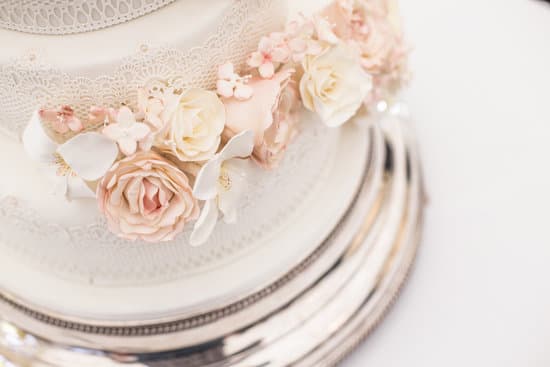Where do wedding rings come from? The history of wedding rings is a fascinating journey that dates back to ancient civilizations and carries significant cultural symbolism. From the evolution of wedding ring styles and materials to the traditional customs around the world, the story of wedding rings is rich and diverse.
The history of wedding rings can be traced back to ancient Egypt, where couples exchanged rings made from woven reeds or leather. These early rings were seen as symbols of eternity, with no beginning or end, representing the infinite love between partners. As civilizations evolved, so did the materials and designs used for wedding rings, reflecting changing cultural and artistic preferences.
The circular shape of wedding rings has long been associated with never-ending love and commitment, making them an integral part of wedding ceremonies across different cultures. The exchange of rings during a wedding symbolizes the couple’s dedication to each other and their promise of lifelong fidelity. Understanding the origins and symbolism behind these timeless traditions adds depth and meaning to this essential aspect of matrimonial celebrations.
Evolution of Wedding Rings
The evolution of wedding rings throughout history has been a fascinating journey, with various styles and materials gaining popularity over the centuries. From ancient times to the present day, the design of wedding rings has evolved significantly, reflecting changes in fashion, culture, and technology.
Ancient Origins
The earliest evidence of wedding rings dates back to ancient Egypt, where couples exchanged rings made from reeds and hemp. The circular shape symbolized eternity and the never-ending love between the couple.
In ancient Rome, wedding rings were typically made from iron, symbolizing strength and permanence. The tradition of wearing the ring on the fourth finger of the left hand also originated during this time, as it was believed that this finger contained a vein that led directly to the heart.
Medieval and Renaissance Period
During the Middle Ages, wedding rings became more ornate and decorative, often featuring intricate patterns and gemstones. It was common for aristocrats and nobility to exchange elaborate gold or silver rings adorned with precious stones as a display of wealth and status. The Renaissance period saw a revival of classical art and culture, which influenced wedding ring designs with motifs inspired by nature, mythology, and ancient civilizations.
Modern Times
In recent centuries, there has been a shift towards simpler and more minimalist designs for wedding rings. The industrial revolution brought about advancements in metalworking techniques, leading to the mass production of wedding bands in materials such as platinum, gold, silver, and titanium. Additionally, diamonds became increasingly popular as the preferred gemstone for engagement rings in Western cultures. Contemporary trends also include alternative materials like tungsten carbide, wood, ceramic, or even recycled metals for eco-conscious consumers.
As We Look Back on the Evolution of Wedding Ring Styles and Materials Over Time,
it is evident that these timeless symbols of love have adapted to reflect changing tastes and cultural influences while still retaining their symbolic significance in marriage ceremonies around the world.
Symbolism of Wedding Rings
The circular shape of wedding rings holds a deep significance in the context of marriage and symbolizes eternity and never-ending love. The unbroken circle represents the everlasting nature of the union between two individuals, with no beginning or end. This symbolism dates back to ancient civilizations, where rings were exchanged as a token of commitment and unity.
Historical Significance
Throughout history, the act of exchanging rings has been deeply rooted in various cultures and religious traditions. For example, in ancient Egypt, couples exchanged rings made from materials such as leather or reeds, while in ancient Rome, iron rings were a symbol of strength and permanence. The practice then evolved into the use of precious metals such as gold and platinum to signify the value and importance of the marital bond.
Exchange Ritual
During a wedding ceremony, the exchange of rings is a symbolic gesture that signifies a couple’s commitment to each other. This tradition is often accompanied by vows that express love, fidelity, and dedication. The placing of the ring on the fourth finger of the left hand also holds cultural significance-the “ring finger” was believed by ancient Egyptians to have a vein that leads directly to the heart, thus symbolizing love and connection.
Unifying Symbol
In addition to representing eternal love, wedding rings also serve as a visible sign of unity between spouses. The act of wearing matching rings signifies solidarity and demonstrates to others that an individual is committed to their partner. Whether it’s through intricate designs or personalized engravings, wedding rings are not only symbols but also tangible expressions of love and devotion.
Traditional Wedding Ring Materials
The tradition of exchanging wedding rings dates back to ancient Egypt, where the circle was a symbol of eternity and the endless love between couples. The circular shape of the ring also represented a never-ending cycle, making it a perfect symbol for marriage. It is believed that the ancient Egyptians were the first to use wedding rings when they made rings out of plants that grew alongside the Nile River.
As time passed, different cultures adopted their own variations of wedding rings, with each culture developing unique customs and styles. In ancient Rome, for example, it was common for couples to exchange iron rings, symbolizing strength and permanence. Meanwhile, in medieval Europe, gold became the preferred material for wedding rings as it signified wealth and social status.
Today’s wedding rings are typically made from a variety of metals and gemstones. Gold remains one of the most popular choices due to its timeless appeal and durability. However, modern couples also have options such as platinum, silver, titanium, and even alternative materials like wood or ceramic. Gemstones such as diamonds, sapphires, emeralds, and rubies are often incorporated into wedding rings to add color and sparkle.
In addition to the traditional materials used in producing wedding rings, there is an increasing demand for ethical and sustainable options. Many couples are now seeking out eco-friendly choices such as recycled metals or lab-grown gemstones to reduce their environmental impact. This shift towards ethical sourcing reflects a growing awareness of social responsibility within the jewelry industry.
| Wedding Ring Material | Common Properties |
|---|---|
| Gold | Timeless appeal & durability |
| Platinum | Durable & hypoallergenic |
| Titanium | Lightweight & scratch-resistant |
Wedding Ring Customs Around the World
In many cultures around the world, the exchange of wedding rings holds deep cultural and symbolic significance. From traditional customs to unique rituals, the way in which wedding rings are incorporated into marriage ceremonies can vary widely. Here are some fascinating customs related to wedding rings from different parts of the world:
- In Hindu weddings, the bride and groom exchange floral garlands during the ceremony as a symbol of acceptance and love. The groom then places a mangalsutra, a necklace with black and gold beads, around the bride’s neck, signifying her marital status. Additionally, some Hindu couples exchange toe rings as a symbol of their union.
- In Ireland, it is customary for couples to have Claddagh rings as their wedding bands. The Claddagh ring features two hands holding a heart with a crown on top, symbolizing love, loyalty, and friendship. These rings are often passed down through generations and are worn with the heart facing either towards or away from the wearer, indicating their relationship status.
- In Japan, wedding rings are not always exchanged during the ceremony. Instead, couples often receive engagement rings called “yubiwa,” which are worn on the right hand before being moved to the left hand after marriage. Additionally, some Japanese couples choose to have matching his-and-hers engraved rings as a symbol of their commitment.
From ancient traditions to modern trends, it is evident that wedding ring customs vary greatly across different cultures and regions. Understanding these diverse rituals can provide valuable insight into the rich tapestry of global wedding traditions. Where do wedding rings come from? These customs offer a glimpse into the history and cultural significance behind this timeless symbol of love and commitment.
Famous Wedding Rings
One of the most famous wedding rings in history is that of Queen Elizabeth II. Her majesty’s engagement ring was made using diamonds from a tiara that belonged to Prince Philip’s mother, Princess Alice of Battenberg. Interestingly, jewelry company Garrard originally made it with sapphires, but they later replaced them with diamonds after learning that sapphires were believed to possess negative energy.
Another iconic wedding ring is the one worn by Jacqueline Kennedy. John F. Kennedy proposed to her with a beautiful emerald and diamond ring in 1953. This stunning piece had been passed on through generations and originally belonged to his grandmother. This unique and elegant design has been admired for its timeless beauty.
Furthermore, Johnny Cash and June Carter’s love story was solidified with a specially designed gold band featuring 14 small diamonds. It exhibited their strong bond and long-lasting love, making it one of the most unforgettable wedding rings in history, symbolizing their life-long commitment to each other.
These famous wedding rings remind us that the stories behind these pieces are just as meaningful as the rings themselves; they have stood the test of time and continue to inspire romance around the world today.
Modern Wedding Ring Trends
Today, the wedding ring industry is constantly evolving, offering a wide range of contemporary designs, personalization options, and popular styles for couples to choose from. Modern wedding rings are not limited to traditional gold bands; instead, they come in various metals such as platinum, titanium, and silver. Furthermore, many couples opt for unique designs that incorporate different textures, finishes, and embellishments to reflect their personal style.
Personalization options have also become increasingly popular in the wedding ring industry. Couples now have the opportunity to customize their rings with engravings, birthstones, or even fingerprint impressions. This allows them to create a truly one-of-a-kind piece that holds special meaning and significance.
In addition to personalization, there are several popular styles that have emerged in the modern wedding ring industry. Stackable rings, which allow couples to mix and match different bands to create a personalized look, have gained popularity in recent years. Vintage-inspired designs featuring intricate detailing and filigree work are also making a comeback.
Moreover, minimalist bands with clean lines and understated elegance are favored by those who appreciate simplicity and timeless design. Overall, modern wedding ring trends offer couples a myriad of options to find the perfect symbol of their love and commitment.
As more consumers become conscious of ethical and sustainable practices in various industries, including jewelry production, there is also a growing demand for eco-friendly and socially responsible wedding rings. Companies are now offering ethically sourced gemstones and recycled metals as alternatives to traditional materials. By choosing these options, couples can ensure that their wedding rings have been produced with minimal environmental impact and adhere to fair labor practices.
Ethical and Sustainable Wedding Rings
In a world where sustainability and ethical consumption are becoming increasingly important, it’s no surprise that couples are seeking out eco-friendly and socially responsible options when it comes to purchasing their wedding rings. From recycled materials to fair trade practices, there are a multitude of ways for individuals to ensure that their symbol of love is not harming the planet or its people.
One of the most popular options for ethical and sustainable wedding rings is the use of recycled precious metals. By choosing rings made from recycled gold, silver, or platinum, couples can reduce the environmental impact of mining and lessen the demand for new precious metal extraction. Additionally, many jewelers offer conflict-free diamonds and gemstones, which ensures that no human rights abuses or environmental damage occurred during their sourcing.
Another important consideration for conscientious consumers is the origin of their wedding ring materials. Ethical jewelers are transparent about where their metals and gemstones come from, often sourcing them from responsible mines or suppliers who prioritize environmental protection and fair labor practices. By supporting these businesses, couples can feel confident that their wedding rings have been produced in an ethical manner.
As society continues to prioritize sustainability and social responsibility, it’s likely that the demand for ethical and sustainable wedding rings will only continue to grow. Couples have more choices than ever before when it comes to selecting environmentally friendly and ethically sourced wedding bands, making it easier for them to align their values with their significant life purchases.
Where do wedding rings come from? Fortunately, today’s conscientious consumers can answer that question with confidence, knowing that they’ve made thoughtful choices in support of a better world.
Frequently Asked Questions
Where Did the Origin of Wedding Rings Come From?
The tradition of exchanging wedding rings dates back to ancient Egypt, where the circle was seen as a symbol of eternity. This practice spread to other cultures over time.
What Is the Source of the Wedding Ring?
The source of the wedding ring can be traced back to the early Egyptians, who believed that the circular shape symbolized eternal love and commitment between spouses. This concept was later adopted by other civilizations.
Is Wearing a Wedding Ring Biblical?
While there is no direct mention of wedding rings in the Bible, the act of wearing a ring to symbolize marriage is consistent with biblical teachings about the sanctity of marriage and the commitment between spouses. This has led many people to view wearing a wedding ring as a practice aligned with biblical principles.

I have been involved in marriages for over 20 years helping couples and singles understand more about them.





